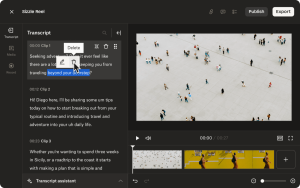Remain competitive with campaign insights and customer segmentation with the help of clean room partners.
Even though it’s harder than ever for marketers to get customer data, customers demand the same high level of relevance when they hear from companies.
To gain better campaign performance with less readily available data, here’s how marketers are getting their first-party data in order and partnering with clean rooms.
Getting first-party data in order
“You have to be able to work with third-party providers or make sure that you have a robust first-party internal identity resolution strategy to be able to confidently resolve and standardize your zero- and first-party data,” said Kelly Leger, managing director for Deloitte Digital at The MarTech Conference.
Due to the depreciation of third-party cookies and new regulations that govern how companies obtain permission to use customer data, many of the usual streams of data are being interrupted, causing signal loss.
“Because there will be disparate customer data sets out there and signal loss will be occurring, you have to make sure that your customer data is shored up,” Leger said.
The first-party and zero-party data that your company has needs to be standardized and cleansed. Marketers need easy access to this existing data.
To make sure future campaigns are set up for success, marketers also need to optimize the data coming in from paid media campaigns, as well as the data obtained through owned and operated channels. To remain competitive and relevant to customers, orgs need to gain all the insights they can from their “campaign exhaust” — the learnings that marketers use from campaigns.
Lastly, it’s important for business to make sure that their handling of customer data, and especially personal identifiable information (PII), is done consensually and according to that latest applicable laws.
“This first-party data, and your zero-party data, are going to become more important than ever ,” said Leger. “[Customer data] is the most valuable asset that you have.”
Partnering with advertising clean rooms
“What we’re seeing is that the stack is really centering around first-party data, and bringing in third-party data to augment and understand more about the consumers,” Leger explained.
Hopefully your brand has many customers who raise their hands and get proactive on your owned channels. They might sign up for newsletters, take surveys or engage in other ways that make themselves known to your brand.
But, there are also many passive users. To help communicate with more of them, brands can partner with a third party that has data of their own to resolve identities without disclosing that data to you and violating the user’s privacy. The use of these advertising clean rooms enables brands to enhance the data they have to make campaigns more targeted and more effective.
“Ads clean rooms are clean rooms that sit inside the digital giants and enable the ability to use your first-party or third-party known customer data in conjunction with your insights and learnings from your campaign data,” said Leger.
She added, “The campaign and insights from that walled garden or that digital giant can’t leave that clean room, but can definitely help you optimize, create better targeting capabilities and enable the ability to better refine all of your advertising within that platform.”
Using enterprise clean rooms
In addition to using an ads clean room for a campaign within a walled garden or digital giant, brands can also partner with an enterprise clean room outside of these walled gardens on the open web.
Using an enterprise clean room can help drive and optimize ad campaigns on multiple channels, allowing your business to find relevant customers on those channels.
“These enterprise clean rooms act in a similar way where you can connect your zero- and first-party data to third-party data or second- party data relationships across your enterprise and enterprise partners for deeper insights and expanded activation capabilities,” said Leger.
She added, “Again, sitting outside of those digital giants’ walled gardens, you have a little bit more capability with this data to be able to take it back into your first-party ecosystem…to better inform your audience and your segmentation.”
All of this data should be consented. Also, it’s predominantly anonymized, because to optimize these campaigns, marketers are using anonymized data attributes, as opposed to PII.
By getting their own first-party data in order, and using these ad clean rooms and enterprise clean rooms as partners, businesses can confidently improve their campaign strategies, even as the data landscape continues to change.
The post How companies are leveraging clean rooms and first-party data as cookies vanish appeared first on MarTech.
MarTech(16)








